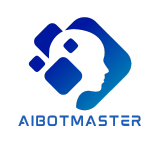In the rapidly evolving landscape of artificial intelligence, two platforms have emerged as leaders in empowering autonomous AI agents – SuperAGI and AutoGPT. While both facilitate the creation of intelligent agents, they take distinct approaches. In this article, we’ll explore the key differences between SuperAGI and AutoGPT, their features, applications, and future outlooks.
SuperAGI: A Comprehensive Framework for AI Autonomy
SuperAGI is an open-source platform placing emphasis on user-friendly tools for managing autonomous AI. Its robust framework streamlines creating, deploying, and managing intelligent agents.
Key Features of SuperAGI:
1. Provision, Spawn, and Deployment of Autonomous AI Agents at Scale
SuperAGI allows developers to efficiently create, provision, and deploy autonomous AI agents at scale. This enables seamless scaling of agents for various applications.
2. Integration with Tools like Zapier, Jira, and Instagram
Integrate popular tools such as Zapier, Jira, and Instagram to amplify SuperAGI’s capabilities. This enhances functionality and utility.
3. User-Friendly Graphical User Interface
SuperAGI offers an intuitive graphical user interface that simplifies agent management and control. This makes interactions efficient and straightforward.
4. Performance Telemetry for Optimization
Access performance telemetry within SuperAGI to optimize and fine-tune agent efficiency and behavior.
5. Advanced Looping Detection and File Storage
SuperAGI features robust looping detection and file storage. This contributes to reliable, stable autonomous AI operations.
SuperAGI enables developers to efficiently build production-ready autonomous agents. Its comprehensive toolkit and intuitive interface optimize leveraging AI.
AutoGPT: A Minimalist Approach to Goal Achievement
Alternatively, AutoGPT utilizes a minimalist methodology focused on accomplishing specific goals stated in natural language inputs. This experimental application employs automatic loops and GPT-4 capabilities to iteratively reach objectives.
Key Features of AutoGPT:
1. Leverages GPT-4 for Coherent Text Generation
AutoGPT utilizes the advanced GPT-4 model to produce high-quality, coherent text output for a variety of applications.
2. Internet Access Expands Knowledge Base
With internet access, AutoGPT can incorporate up-to-date information into its knowledge base, keeping it relevant.
3. Sophisticated Memory Management
AutoGPT implements robust short and long-term memory management for context retention during conversations.
4. File Storage and Summarization
AutoGPT can store files as well as generate summaries of documents to enhance capabilities.
5. Extensibility Through Plugins
Developers can extend AutoGPT’s functionalities by integrating custom plugins as needed.
AutoGPT’s streamlined architecture aims to fulfill objectives through sequential task decomposition powered by AI.
Also Read: The Best AI Detection Tools for Businesses: Ensuring Authenticity and Accuracy
Comparing SuperAGI and AutoGPT across various aspects:
Emphasis and Goals
SuperAGI emphasizes autonomy and user-friendly interfaces, while AutoGPT focuses on minimalism to achieve specific goals.
Framework and Architecture
SuperAGI provides an extensive open-source framework tailored for autonomous AI, whereas AutoGPT is an experimental app that breaks down tasks.
Integrated Tools and Capabilities
SuperAGI can utilize diverse tools like Zapier and Instagram, while AutoGPT leverages internet access and memory management.
Deployment and Interaction
SuperAGI enables the smooth deployment of agents via a graphical UI, while AutoGPT uses command-line interaction.
Strengths and Advantages
SuperAGI excels in its framework, UI, and tools, while AutoGPT offers robust internet access and memory management.
Limitations and Weaknesses
SuperAGI has some autonomy limitations and technical demands, while AutoGPT lacks a GUI and full autonomy.
Use Cases and Applications
SuperAGI suits automating tasks and content generation, while AutoGPT assists research and creativity.
Development Roadmaps
SuperAGI focuses on enhancing its UI and tools, while AutoGPT aims to improve plugins and Google API integration.
Comparing the Two Platforms
While both facilitate autonomous AI, SuperAGI targets developers seeking robust tooling and framework customization. The graphical interface simplifies control. AutoGPT appeals to those prioritizing minimalism and goal-oriented functionality. It eschews complexity for focused practical use.
Practical Applications
SuperAGI excels at building AI agents for customer service, data analysis, and content creation. AutoGPT’s minimalism shines for research, nurturing creativity, and personal assistance applications.
Future Outlook
Both platforms plan continued enhancements. SuperAGI aims to improve its interface and expand its capabilities. AutoGPT intends to strengthen memory management and Google API integration.
Conclusion
SuperAGI and AutoGPT take different but complementary approaches to empower autonomous AI. SuperAGI offers a feature-rich framework while AutoGPT pursues a minimalist methodology. Their distinct strengths serve different needs within the evolving AI landscape. By understanding their nuances, developers can determine the best platform for their needs as autonomous AI continues maturing.
Also Read: The Coolest AI Song Lyric Makers in 2023
FAQ
Q1: What are SuperAGI and AutoGPT, and how do they differ in their approaches to autonomous AI agents?
SuperAGI and AutoGPT are leading platforms for creating autonomous AI agents. They differ in their core methodologies: SuperAGI emphasizes autonomy and user-friendly tools, while AutoGPT focuses on minimalist goal achievement through natural language inputs and iterative loops.
Q2: What are the key features of SuperAGI’s framework for AI autonomy?
SuperAGI offers a comprehensive open-source framework for autonomous agents, allowing developers to provision, spawn, and deploy agents efficiently. It incorporates tools like Zapier, Jira, and Instagram, boasts a graphical user interface for easy management, and provides advanced features like looping detection and file storage.
Q3: How does AutoGPT achieve goal-oriented tasks with its minimalist approach?
AutoGPT leverages GPT-4 to generate coherent text and employs automatic loops for sequential task decomposition. It has internet access for knowledge expansion, memory management for context-aware responses, and extensibility through plugins.
Q4: What are the practical applications of SuperAGI and AutoGPT?
SuperAGI excels in automating tasks, data analysis, and content creation. AutoGPT shines in research, nurturing creativity, and assisting with various tasks through its minimalistic approach.
Q5: What are the future plans for SuperAGI and AutoGPT?
SuperAGI is focused on improving its user interface, introducing advanced functionalities, and expanding its toolbox of available tools. On the other hand, AutoGPT has plans to strengthen plugin support, optimize memory management, and enhance its integration with Google APIs.

